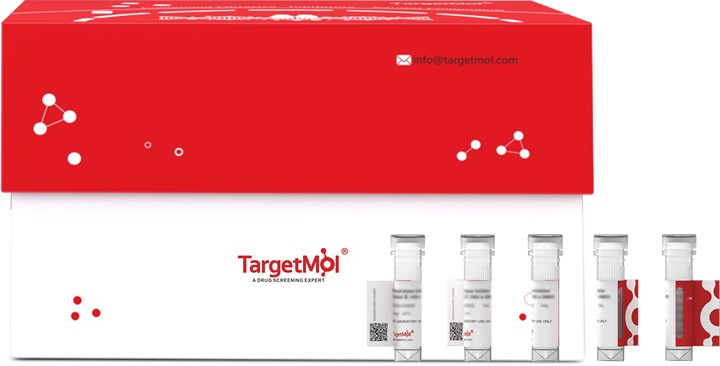购物车
全部删除  您的购物车当前为空
您的购物车当前为空
PGLYRP1 Protein, Human, Recombinant (His), Biotinylated is expressed in HEK293 Cells. The accession number is O75594.

| 规格 | 价格 | 库存 | 数量 |
|---|---|---|---|
| 5 μg | ¥ 987 | 6-8日内发货 | |
| 10 μg | ¥ 1,680 | 6-8日内发货 | |
| 20 μg | ¥ 2,930 | 5日内发货 | |
| 50 μg | ¥ 4,750 | 5日内发货 | |
| 100 μg | ¥ 7,880 | 5日内发货 |
| 生物活性 | Activity testing is in progress. It is theoretically active, but we cannot guarantee it. If you require protein activity, we recommend choosing the eukaryotic expression version first. |
| 产品描述 | PGLYRP1 Protein, Human, Recombinant (His), Biotinylated is expressed in HEK293 Cells. The accession number is O75594. |
| 种属 | Human |
| 表达系统 | HEK293 Cells |
| 标签 | C-His |
| 蛋白编号 | O75594 |
| 别名 | UNQ639/PRO1269,TNFSF3L,TAG7,SBBI68,PGRP-S,PGRPS,PGRP,PGLYRP |
| 蛋白构建 | A DNA sequence encoding the Human PGLYRP1 (O75594) (Met1-Pro196) was expressed with a polyhistidine tag at the C-terminus. |
| 蛋白纯度 | ≥ 95% as determined by SDS-PAGE. |
| 分子量 | 20.88 kDa (predicted); 24.3 kDa (reducing contition) |
| 内毒素 | < 1.0 EU per μg protein as determined by the LAL method. |
| 缓冲液 | Lyophilized from sterile PBS, pH 7.4. Please contact us for any concerns or special requirements. Normally 5 % - 8 % trehalose, mannitol and 0.01% Tween 80 are added as protectants before lyophilization. Please refer to the specific buffer information in the hardcopy of datasheet or the lot-specific COA. |
| 复溶方法 | Please refer to the lot-specific COA. |
| 存储 | It is recommended to store recombinant proteins at -20°C to -80°C for future use. Lyophilized powders can be stably stored for over 12 months, while liquid products can be stored for 6-12 months at -80°C. For reconstituted protein solutions, the solution can be stored at -20°C to -80°C for at least 3 months. Please avoid multiple freeze-thaw cycles and store products in aliquots. |
| 运输方式 | In general, Lyophilized powders are shipping with blue ice. |
| 研究背景 | Peptidoglycan recognition protein 1, also known as Peptidoglycan recognition protein short, PGRP-S, PGLYRP1, PGLYRP, PGRP and TNFSF3L, is a secreted protein that belongs to the N-acetylmuramoyl-L-alanine amidase 2 family. PGLYRP1 / PGLYRP is highly expressed in bone marrow. It is weakly expressed in kidney, liver, small intestine, spleen, thymus, peripheral leukocyte, lung, fetal spleen and neutrophils. PGLYRP1 / PGLYRP is a pattern receptor that binds to murein peptidoglycans (PGN) of Gram-positive bacteria. It has bactericidal activity towards Gram-positive bacteria. PGLYRP1 / PGLYRP may kill Gram-positive bacteria by interfering with peptidoglycan biosynthesis. It binds also to Gram-negative bacteria, and has bacteriostatic activity towards Gram-negative bacteria. Peptidoglycan recognition proteins (PGRPs or PGLYRPs) are innate immunity proteins that are conserved from insects to mammals, recognize bacterial peptidoglycan, and function in antibacterial immunity and inflammation. Mammals have four PGRPs: PGLYRP1, PGLYRP2, PGLYRP3, and PGLYRP4. They are secreted proteins expressed in polymorphonuclear leukocytes (PGLYRP1), liver (PGLYRP2), or on body surfaces, mucous membranes, and in secretions (saliva, sweat) (PGLYRP3 and PGLYRP4). All PGRPs recognize bacterial peptidoglycan. The PGRPs likely play a role both in antibacterial defenses and several inflammatory diseases. They modulate local inflammatory responses in tissues (such as arthritic joints) and there is evidence for association of PGRPs with inflammatory diseases, such as psoriasis. |